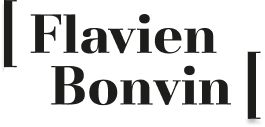Product Management in a Growing Startup Is Not an Easy Task
Startups are awesome, you are free to lead the project where the team wants. But this fact makes it hard to focus.

Working in a startup is a fantastic experience; many things differ with established and traditional companies. There are great aspects, for example, responsiveness or freedom, which are essential components of such structures and are required to succeed. Sadly, not everything is rosy, especially when it comes to product development and time management.
Firstly, let’s detail my working environment. The startup I work for was founded three years ago and is financed by a Swiss insurance company. Since the beginning, an agency handles all the development of the platform. I work there as a software developer and have the chance to have a desk at the agency office during sprints. One last point, I’ll use agile terms in this article since they’re the ones we employ daily and are prevalent in startups vocabulary.
It might seem counterintuitive at first, but the reality is that behind every strength of a startup lies a weakness (as for most things on earth). Where there is reactivity, there is a lack of temper and precipitation. Where there is freedom, there are disorganization and lack of process. The words used are harsh; don’t be offended. They’re here for the sake of their image. Besides those issues, we can add a tremendous amount of work in business development or support. Every aspect of the company has to be managed by a limited team composed of people who are versatile but not experts in the fields assigned to them. Many things are learned-by-doing. This has its constraints.
Where the Problem Lies
Everybody knows that developing software is a complicated task. Each feature requires many details to ensure understanding and quality over time. This is why dedicating enough time on brainstorming, specifying, and maintaining a product backlog is critical. Managing those documents is often overlooked in small teams. Tickets are thrown in the system without checking if it already exists or detailing them well enough.
Besides, the reactiveness that startups enjoy may also worsen the situation. Since startups follow opportunities, they lack vision and long-term goals. This could result in half-baked features, critical bugs remaining in production, or delay on strategical tasks.
Lastly, the working environment of startups doesn’t leave much time for introspection. Days are filled with activities and surprises. This makes it hard to perform improvements of any kind. Besides, enough time has to be dedicated to ensuring that the changes are correctly implemented. If that’s not the case, nothing will change.
These examples can be present in many startups. Various others could be detailed, but that’s out of the scope of this article. The goal is to find a way to solve those issues.
What could be done
There is no easy fix when it comes to task management. A Product Owner is an essential member of the team. It’s not relevant whether this requires the recruiting of a new collaborator, or he/she emerges from the restructuring of the group. What’s important is to have a Product Owner. Besides, the role isn’t necessarily a full-time job. It will take some time, but once the person is in place, enhancements in the creation, organization, and prioritization of issues will arise. On top of that, his/her positions as the “product expert” allows him/her to challenge the team with questions that would have gone unanswered without him/her. Thus, further improving the quality of both feature developed and tickets reporting.
If the group is working with an external company for the development, the Product Owner is the intermediary between the agency and the team, he/she’ll be responsible for defending the project when meeting the consultants. Nevertheless, it’s essential to allocate enough time to nurse the Product Backlog. This effort has to be sustained over time. Otherwise, the PO is pretty useless, and the labours made will have been in vain.
Defining long-term objectives in a startup is, indeed, hard. The work environment makes it so. It’s, however, capital to know where the team is heading and ensure that every member of the group shares this vision. Defining goals while keeping a reserved time to follow opportunities is a good compromise in startups. This helps the startup develop core features while allowing some agility. The team, therefore, has a common thread throughout the year (or the defined period) while having enough slack to deviate from it when necessary. This way, investors are reassured, and the team doesn’t lose its reactiveness. Although the concept is simple, its implementation is less so. How to determine the correct ratio between the two items? How to handle delays or technical complications? Does a nonessential functionality have to be scrapped if the annual objectives are harder than anticipated? Those critical questions have to be answered by the whole team and respected. If this is not done, the company will not meet its long-term goal and miss opportunities.
Here are two possible solutions out of the three problems discussed above. They are, however, still potential answers, and the one proposed emerges from only one employee of the group. Exploring and challenging the idea is yet required. Sadly, that’s where the third difficulty arises. It can be hard to find the necessary time to brainstorm about the team in a startup. Calendars are filled with meetings. It became tough (or impossible) to find a time where everybody is attending.
If scheduling a rendezvous during working hours is hard, why not finding one outside of them? Not before nor after the work but in between, during lunch. Why then? Because most of the people are at the office at this time. It does not require a late riser to change habits, and it does not interfere with the program people have after the job.
Lunch is something essential. Whether with colleagues or alone, it is crucial to disconnect from work and take a break. This is why impeding this time should be done sparingly. Besides, some people prefer to stay by themselves or converse anything but work during lunch. That’s why it’s necessary to consider the sensitivities of everybody and communicate about the goal of the meeting.
One key advantage of those “brainstorming lunch” is the particular environment created. This facilitates discussion and might provide solutions that would have been ignored otherwise.
Subscribe to the newsletter to get new articles right in your inbox!
Subscribe to the newsletterHow to implement a “brainstorming lunch.”
Nothing can start without someone noticing an issue. Whether it’s a developer, a manager, or somebody in the marketing doesn’t matter. Seeing a problem is what’s important.
It’s then possible to plan a meeting or to contact the management to do so. This process will change depending on the size and society of your company. If you have to go through your managers to organize the lunch, it’s essential to detail your intentions and make sure that they support you. This is critical since initiatives without the backing of superiors will most certainly fall in oblivion.
The attendee of the “brainstorming lunch” should be the persons that are the most concerned by the issue and a hierarchical superior. However, you are free to invite anyone if having more points of view is important.
Side note: describing the idea behind the lunch is a nice way to ensure greater participation. Whether you give details in the event or in an email is up to you, but you have to sell your idea to your colleagues. If possible, it would be excellent to order or prepare some food to share. This would be an attractive incentive for your coworker to come, and it demonstrates that the company supports the initiative. If the person you work with doesn’t show up to the meeting, all efforts would be pointless, and nothing will change.
You don’t need fancy powerpoints and KPI, focus on humans
Keep in mind the nature of the meeting. This is something that people are not used to. This is why focusing on one issue only is a great start, at least for the first few meetings. Trying to squeeze four items in one hour might be too much, and, at the end of the session, everything will remain the same.
Now that all is prepared, it is time to eat. Although the meeting is informal, it is important to keep in mind the purpose of the latter. The team has to brainstorm potential improvements to the identified problem. The approach to the meeting must also be adapted. It’s not easy to change slides while eating a pizza. That’s why all digital devices should be banned; a simple notebook is enough. The goal is to gather feedback and establish an action plan for the future, no need to have charts about some KPIs.
It’s essential to transmit the notes you took to your colleagues once the meal is over. If everything stopped at the same time as the lunch, all the efforts made would have been in vain. If your coworkers weren’t too distracted by the food, it was possible to discuss the problems and identify areas for improvement. It is important to implement the changes discussed or to plan the next steps. Keeping track of everything ensures that the ideas that were brainstormed are applied.
Are brainstorming lunch the ultimate solution?
Of course, they aren’t. If a silver bullet existed, everybody would use it. There is, however, a reason why the article focused on those “brainstorming lunch”: they can help and require little to no effort. Whether the issue is related to lack of objective, product direction, or team reorganization, these meetings are an opportunity to talk about an issue.
Will those lunches provide any insightful solution?
Sadly no, they’re not going to solve any problems by themselves, but they lay the first stone. It is important to stress that these meetings are only the beginning of the improvement process. Once the potential solutions are identified, it’s possible to organize their implementation. Be it is during a traditional meeting with an executive, or as soon as the lunch is over, it is necessary to undertake these improvements.
However, it’s more than sure that change will occur if the procedure is done correctly.
It’s now up to you and your team to determine the right path for your company. You and your coworkers are the ones who know your startup the best.
One last point. Don’t put too much pressure on yourself. Those meetings are casual. The goal is to work out a solution, and it is important to create an atmosphere conducive to discussion. It’s okay if nothing tangible emerges, the exercise is new for everybody, and it might take another try before finding what’s right for the team. Keep in mind that if nothing useful is found, you still had a good pizza and spent time with your colleagues.
